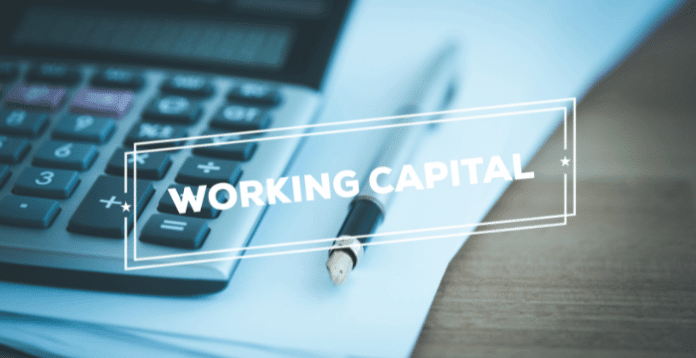Running a business involves a lot of moving parts, and one of the most crucial components is working capital. It is a fundamental concept in the world of business that represents the difference between a company’s current assets and its current liabilities. In simple terms, working capital refers to the money a business needs to keep running day-to-day operations. This includes paying suppliers, salaries, rent, and other operating expenses.
It’s crucial for companies of all sizes and industries to understand the importance of working capital as it impacts their ability to meet financial obligations, maintain liquidity, and grow their business.
Table Of Content
What is Working Capital?
Working capital is the difference between a company’s current assets and current liabilities, representing the financial resources used for day-to-day operations. It’s essential for a company’s ability to meet short-term obligations and invest in growth opportunities. It can fluctuate based on a variety of factors, such as changes in sales volume, inventory levels, and accounts receivable and payable.
Managing it is critical for financial health and can impact a company’s profitability and borrowing costs. This means that you need to monitor your working capital on an ongoing basis and make adjustments as needed.
Why is Working Capital Important?
One reason why working capital is important for businesses is operational needs. A company needs it to pay for its operating expenses, such as rent, utilities, salaries, and inventory. Without sufficient working capital, a business may not be able to meet its financial obligations and may have to delay payments, which can result in penalties or damaged relationships with suppliers and employees.
Businesses that are growing need it to finance their expansion. With insufficient one, a company may not be able to take advantage of growth opportunities, resulting in missed revenue and profit. During recessions or market fluctuations, revenue may decline, and businesses may face difficulty collecting on their accounts receivable. Having sufficient one can help a business weather these economic downturns and remain solvent until the economy recovers.
Lastly, working capital is important for maintaining good relationships with suppliers and customers. A business that has a reputation for paying its bills on time is more likely to be able to negotiate favorable terms with suppliers and attract new customers. In contrast, a business that is known for delaying payments may struggle to retain suppliers and customers, which can harm its long-term viability.
Advantages of Working Capital
Working capital is a critical component of a company’s financial health and success that provides several advantages to a company, such as:
- It allows a company to cover its short-term obligations, such as paying bills and meeting payroll. This ensures the company can continue operating without interruption.
- It can be used to invest in growth opportunities, such as purchasing new equipment or expanding into new markets. This leads to increased revenue and profits.
- Having a healthy working capital position improves a company’s creditworthiness, making it easier to obtain financing at lower costs. Keep in mind that it’s also possible to get working capital loans from the Small Business Administration (SBA) to give you more leeway in this context. So long as you meet the qualifications for SBA loan eligibility, this could open up even more opportunities to manage company finances very efficiently.
- Managing it effectively reduces the risk of financial distress or bankruptcy.
Overall, by optimizing it, businesses can improve its overall efficiency and profitability by minimizing the amount of cash tied up in operations.
How to Calculate Working Capital
Working capital is calculated by subtracting current liabilities, such as accounts payable and short-term debt, from current assets, such as cash, accounts receivable, and inventory. A positive working capital signifies that a company has enough liquid assets to cover its short-term liabilities. On the other hand, negative one indicates that a company may struggle to meet its short-term financial obligations and may face difficulties in running its operations smoothly.
To simplify this calculation process, you can use Asset Management Software. This system enables you to easily monitor information regarding the assets you have with serial numbers and barcodes. Furthermore, you can instantly create reports on asset values with relevant metrics and show it in various charts.
Also Read: How to Maximize Your Current Asset Calculation with Asset Management System
Components of Working Capital
The components of this concept include current assets and current liabilities.
Current assets
Current assets are the assets that a company can convert into cash within a year. Some of the most common types of current assets include:
- Cash and cash equivalents. These include cash in hand, bank balances, and short-term investments.
- Accounts receivable. This refers to the money owed to the company by its customers for goods or services sold on credit.
- Inventory. This includes the raw materials, work-in-progress, and finished goods that a company has in stock.
- Prepaid expenses. These are expenses that have already been paid for but have not yet been used.
Current liabilities
Current liabilities are the liabilities that a company must pay within a year. For instance:
- Accounts payable. This refers to the money that a company owes to its suppliers for goods or services that have been purchased on credit.
- Accrued expenses. These are expenses that have been incurred but have not yet been paid for such as wages or interest.
- Short-term loans. These are small business loans that a company has taken out that must be repaid within a year.
- Taxes payable. This includes taxes that a company owes to the government, such as income tax or sales tax.
Conclusion
Working capital is a crucial concept for any business to understand, as it provides the necessary financial cushion to keep operations running smoothly. Therefore, you have to keep track of it regularly and take necessary steps to maintain it at an optimum level. Utilizing asset management software, such as HashMicro’s Asset Management Software, can be a valuable tool in managing and tracking your working capital.
With its user-friendly interface and customizable features, HashMicro’s Asset Management Software helps streamline your business operations, providing you with real-time insights to make informed decisions. By implementing this software, you can ensure your business’ financial stability and growth in the long run. Register for a free demo now and experience its benefits yourself!


















